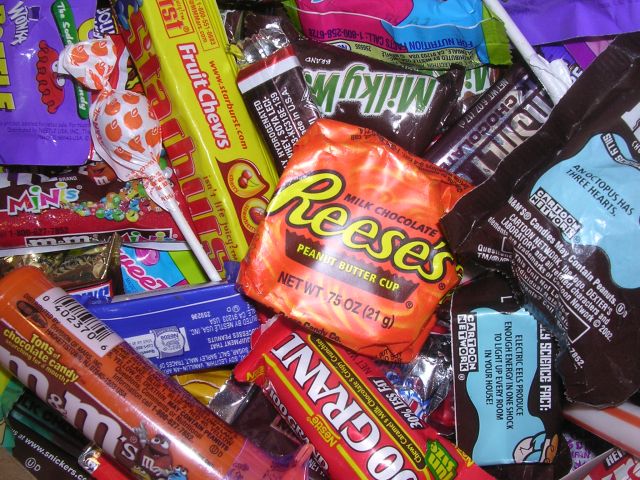|
|
|
|
|
|
| Renee Schoof McClatchy Newspapers. “U.S. industry pledge millions to end child labor in cocoa harvests.” McClatchy – Tribune News Service. 13 Sep. 2010 eLibrary. Web. 04 Nov. 2010. |
This article talks about the importance of ending child labor in Africa, namely Ghana and the Ivory Coast. It states that nation-wide organizations are pledging millions of dollars toward helping native families so they don’t need to depend on the money their children make. Representative Eliot Engel brings up an idea to put a stamp on chocolate products sold in the U.S. that indicates the cocoa was not produced by child slavery; the stamp name would be known as the Fair Trade stamp. |
| Alex Renton. “The tast of Fairtrade really would be sweeter if we demanded an end to child labour, which means corporations paying higher prices to cocoa farmers; the foodies Series: Features.” Times of London. 30 Sep. 2010: 8. eLibrary. Web. 04 Nov. 2010. |
The author of this article talks about the importance of large chocolate companies establishing the Fair Trade regulation. Since many have started to implement this law, those buying cocoa from plantations have to pay more for what used to be less costly. In addition, large chocolate companies such as Cadbury and Nestle are using the Fair Trade regulation because it strengthens their reputation; to be able to say to customers that their chocolate is not produced by child slaves gives them incentive to pay more for cocoa. |
| Phillips, Anne. The Enigma of Colonialism: British Policy in West Africa. London: J. Currey, 1989. Print. |
Chapter five of “The Enigma of Colonialism,” by Anne Phillips discusses the cocoa industry and issues of European control over African cocoa peasant farmers in the early 1900’s. It explains that the workers were underpaid and taken advantage of by the Europeans in that they were used because having them work in the farms was the cheapest and most productive so they didn’t bother building plantations of their own. |
| Shipler, David K. The Working Poor: Invisible in America. New York: Knopf, 2004. Print. |
One of Shipler’s main points in his book, “The Working Poor,” is that those working in minimum waged jobs are overlooked. This concept has a lot to do with what goes on in the chocolate industry. While child slavery on cocoa plantations in Africa is a huge issue, few people know about it and is—just as low-waged workers—very overlooked; no one stops to think about where something as simple as chocolate comes from. |
| BETH DOODLEY. “A sweet treat from the rainforest; The history of chocolate is at our fingertips in the new exhibit at the Minnesota History Center.” Minneapolis Star Tribune. 30 Sep. 2010: T1. eLibrary. Web. 04 Nov. 2010. |
This article is an advertisement of the new chocolate exhibit called, “Chocolate: The Exhibition” in Minnesota. The article talks about the different facts of chocolate including that of child slavery in the cocoa industry and the Fair Trade law. It also has a list of statistics offered at the museum including the fact that 45% of the world’s cocoa is produced by the Ivory Coast in West Africa. |
Elisabeth. "Evaluating Fair Trade as a Development
Project: Methodological Considerations." Development
in Practice. Vol. 15. Taylor & Francis, 2005. 134-50.
JSTOR. Web. 10 Nov. 2010. <http:// 0-www.jstor.org.
sculib.scu.edu/stable/4030075?&Search=yes&term=trad
e&term=africa&term=fair&list=hide&searchUri=%2Fa
ction%2FdoBasicSearch%3FQuery%3Dfair%2Btrade
%2Band%2Bafrica%26gw%3Djtx%26acc%3Don%2
6prq%3Dfair%2Btrade%2Bafrica%26hp%3D25%26w
c%3Don&item=11&ttl=25048&return
ArticleService=s
howFullText>. |
This reading excerpt talks about the high demand of chocolate and how large companies around the world continuously compete for shelve space in stores. Because of the high competition, the companies do not recognize or advertise the fact that chocolate’s source comes from forced labor in Africa. “Big chocolate brands do not feature cocoa origins as part of the message. And the big companies have resisted any direct association with or claims for the sustainability of their brands based on the fair trade model.” (pg. 390) |
Brydon, Lynne. "Slavery & Labour in West Africa."
Review of African Political Economy. Vol. 28.
Taylor & Francis, 2001. 137-40. JSTOR. Web. 10
Nov. 2010. <http:// 0-www.jstor.org.sculib.scu.edu
/stable/4006708?seq=2&Search=yes&term=
child&term=cocoa&term=africa&term=slavery&list
=hide&searchUri=%2Faction%2FdoBasicSearch
%3FQuery%3Dchild%2Bslavery%2Bcocoa%2
Bafrica%26gw%3Djtx%26acc%3Don%26prq%
3Dchild%2Bslavery%2Bcocoa%26hp%3D25%26
wc%3Don&item=3&ttl=420&returnArticleService=
showFullText&resultsServiceName=null>. |
This reading excerpt talks about the high demand of chocolate and how large companies around the world continuously compete for shelve space in stores. Because of the high competition, the companies do not recognize or advertise the fact that chocolate’s source comes from forced labor in Africa. “Big chocolate brands do not feature cocoa origins as part of the message. And the big companies have resisted any direct association with or claims for the sustainability of their brands based on the fair trade model.” (pg. 390) |
 |
 |
 |
|
| This website is being created for CTW 1 at Santa Clara University with Marc Bousquet. |


